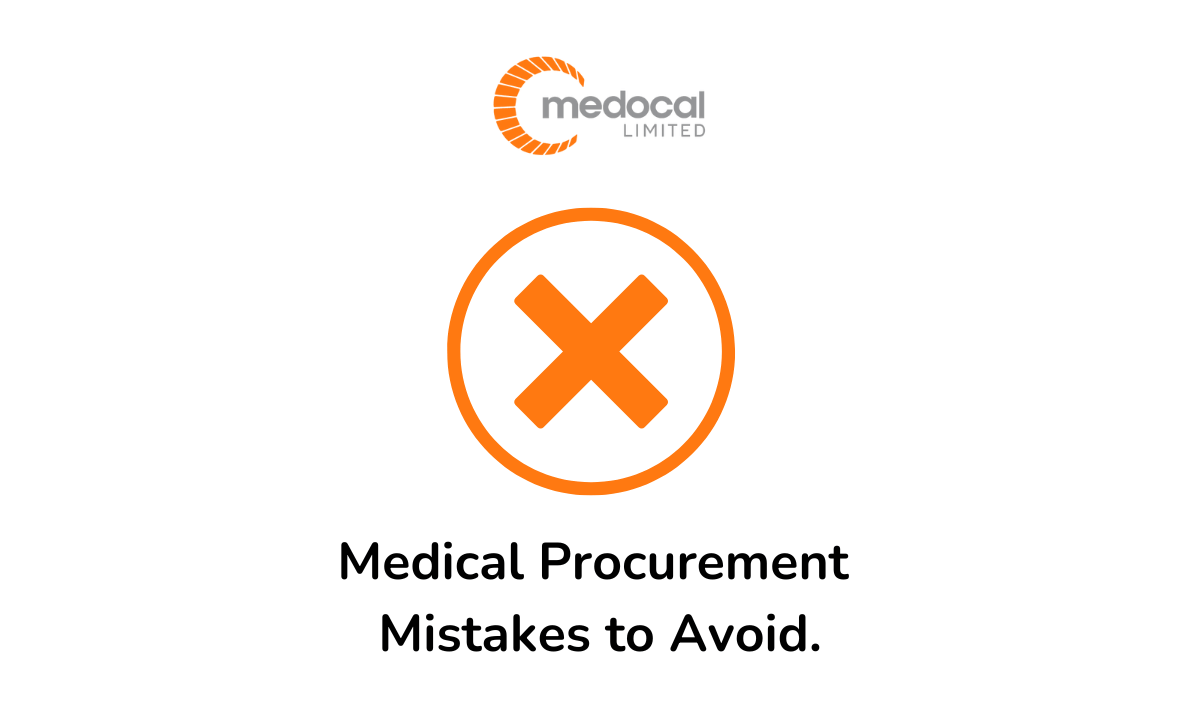Mistake #1: Prioritizing Upfront Cost Over Total Cost of Ownership (TCO)
The most common and costly error is fixating on the initial purchase price. The total cost of ownership (TCO) in healthcare provides a more accurate financial picture, encompassing all direct and indirect costs associated with a product throughout its lifecycle. A cheap diagnostic tool that breaks down frequently or gives inaccurate readings costs far more in the long run than a reliable, high-quality alternative.
Consider these hidden costs:
- Frequent Replacements: Low-quality consumables like gloves or bandages that tear easily require more frequent use, negating initial savings.
- Equipment Downtime: A faulty piece of equipment can bring a whole department to a standstill, leading to lost revenue and delayed patient care.
- Poor Patient Outcomes: Substandard supplies can lead to misdiagnoses, infections, or treatment complications, which have immense financial and ethical repercussions.
- Staff Training and Frustration: Inconsistent or poor-quality supplies can frustrate clinical staff and may require additional training, reducing overall efficiency.
Balancing price and quality is not just a good practice; it’s a financial and clinical necessity. You can explore this balance further in our article on the cost of medical supplies in Kenya. Investing in durable, reliable products like a Littmann Stethoscope Classic II from the outset is a prime example of a smart TCO-based decision that ensures accuracy and longevity.
Mistake #2: Inadequate Medical Supplier Vetting
In the rush to procure medical supplies Nairobi hospitals need, the crucial step of comprehensive medical supplier vetting is often rushed or overlooked entirely. Partnering with the wrong supplier introduces significant risks, from receiving substandard products to facing complete supply chain disruptions. A slick website and a low price list are not substitutes for proper due diligence. Financial pressures can sometimes lead to fraudulent activities, making thorough vetting non-negotiable, a point underscored by research on procurement in Nairobi hospitals. (Source: IJRISS)
A trustworthy supplier should be viewed as a long-term partner, not just a vendor. Before committing, your procurement team should verify the following:
- Regulatory Compliance: Is the supplier listed among the PPB Kenya approved suppliers? Do they have all necessary certifications for the products they sell?
- Market Reputation: Seek out testimonials and references from other healthcare facilities. A supplier’s track record speaks volumes.
- Logistical Capabilities: Can they guarantee timely and consistent delivery? Do they have proper storage facilities to maintain product integrity?
- Quality Assurance Processes: What steps do they take to ensure the products they source and supply are genuine and meet quality standards?
Understanding what to look for in a medical supplies partner is fundamental to building a secure supply chain. Medocal prides itself on a transparent and rigorous vetting process, ensuring every product in our catalogue meets the highest standards of quality and compliance.
Mistake #3: Ignoring the Dangers of Counterfeit Medical Supplies
The infiltration of counterfeit goods into the healthcare system is a grave threat to patient safety. The allure of a significantly lower price can lead procurement teams down a dangerous path, but the consequences of using fake medical supplies are catastrophic. From ineffective dressing and bandages that fail to prevent infection to faulty diagnostic kits that yield false results, the risks are too high to ignore. Avoiding counterfeit medical supplies must be a top priority for any responsible healthcare institution.
Counterfeits can be sophisticated, but there are red flags to watch for. Scrutinize packaging for inconsistencies, verify batch numbers and expiry dates, and be wary of suppliers who cannot provide clear documentation of their products’ origins. The most effective defense is to work exclusively with reputable suppliers who have direct relationships with manufacturers and a transparent supply chain. This is one of the core secrets to sourcing high-quality and affordable medical supplies safely.
For items used daily in high-risk environments, quality is non-negotiable. For instance, authentic Examination Gloves- Nitrile 100s provide a reliable barrier against pathogens, whereas counterfeits may have microscopic holes or be made from unsafe materials. By choosing a partner like Medocal, you ensure every item is genuine and safe for both patients and staff.
Mistake #4: Overlooking Healthcare Supply Chain Logistics
Acquiring quality medical equipment is only half the battle; getting it to the right place, at the right time, and in the right condition is the other half. Poor healthcare supply chain logistics can cripple a hospital’s operations. Stockouts of essential items like syringes and needles can halt procedures, while delayed deliveries can force staff to make difficult decisions. Furthermore, products that require specific storage conditions, such as temperature-sensitive reagents or sterile goods, can be rendered useless if the logistics partner fails to maintain the cold chain or ensure proper handling.
An effective procurement strategy goes beyond the purchase order. It involves a partnership with a supplier who understands the unique logistical challenges of the healthcare sector in Kenya. This includes robust inventory management, reliable transportation, and clear communication channels. A proactive supplier helps you plan your orders effectively, whether you are preparing for a busy season or managing routine inventory. For guidance, our article on when to order wholesale medical supplies provides valuable insights.
At Medocal, we have invested heavily in our logistics network to provide prompt and dependable delivery across Nairobi and beyond. We help our partners achieve operational excellence by ensuring their supply chain is a source of strength, not a point of failure. This level of planning is part of creating sustainable healthcare sourcing practices in Kenya.
Mistake #5: Neglecting Staff Training and Product Usability
The final, often-forgotten mistake in procurement is failing to consider the end-users: the clinical staff. A hospital can purchase the most technologically advanced medical device, but if the staff finds it difficult to use or if it deviates significantly from their standard workflow, its value plummets. This can lead to medical errors, decreased efficiency, and low staff morale. Procurement decisions made in a silo without consulting doctors and nurses are bound to fail in a practical setting.
A strategic procurement officer involves clinical teams in the selection process. They ask critical questions: Is this product intuitive? Is it compatible with our existing equipment? What training is required? Providing products that are familiar and user-friendly, like a well-stocked and clearly labeled First Aid Kit – Occupational, saves precious time in an emergency. For more complex procedures, ensuring staff are well-versed is crucial, which is why resources like our step-by-step guide on how to prime blood tubing are so valuable.
A good supply partner offers more than just products; they offer support. At Medocal, we ensure the products we supply, from basic consumables like Ultrasound Gel to specialized kits, are of a high standard and familiar to medical professionals in Kenya, minimizing friction and maximizing utility.
The Medocal Solution: Your Strategic Partner in Hospital Procurement Kenya
Avoiding these five critical mistakes requires a fundamental shift in perspective. Effective hospital procurement Kenya is not about finding the cheapest items; it’s about finding the best value and the most reliable partner. Medocal is built on the principle of being that partner. We help you move beyond price to build a procurement strategy that enhances patient care, supports your staff, and strengthens your bottom line.
Here’s how we help you avoid these pitfalls:
- Focus on TCO: We supply high-quality, durable products that deliver long-term value.
- Rigorous Vetting: We are a compliant, reputable partner, saving you the risk and effort of vetting unknown suppliers. You can learn about us in our introduction to Medocal Limited.
- Guaranteed Authenticity: We eliminate the risk of counterfeits through our secure and transparent supply chain.
- Streamlined Logistics: Our robust logistics network ensures you get what you need, when you need it.
- User-Centric Products: We source products with the end-user in mind, ensuring usability and effectiveness.
Explore our comprehensive Medical Supplies Catalogue to see the breadth of our quality offerings, from general consumables to specialized Medical Equipments.
Conclusion: Make the Smart Choice for Your Hospital’s Future
The success of a healthcare facility in Nairobi is intrinsically linked to the quality and reliability of its supply chain. By looking beyond the price and avoiding these five critical medical procurement mistakes, you can build a more resilient, efficient, and safer environment for both patients and staff. The right procurement strategy reduces long-term costs, mitigates risks, and ultimately allows your clinical teams to do what they do best: provide excellent care.
Don’t let short-term thinking dictate your hospital’s future. It’s time to adopt a strategic approach to sourcing. Partner with Medocal, your trusted medical partner for hospitals in Kenya. Browse our extensive online catalogue or contact our expert team today to discuss how we can help you build a smarter procurement process for 2025 and beyond.





